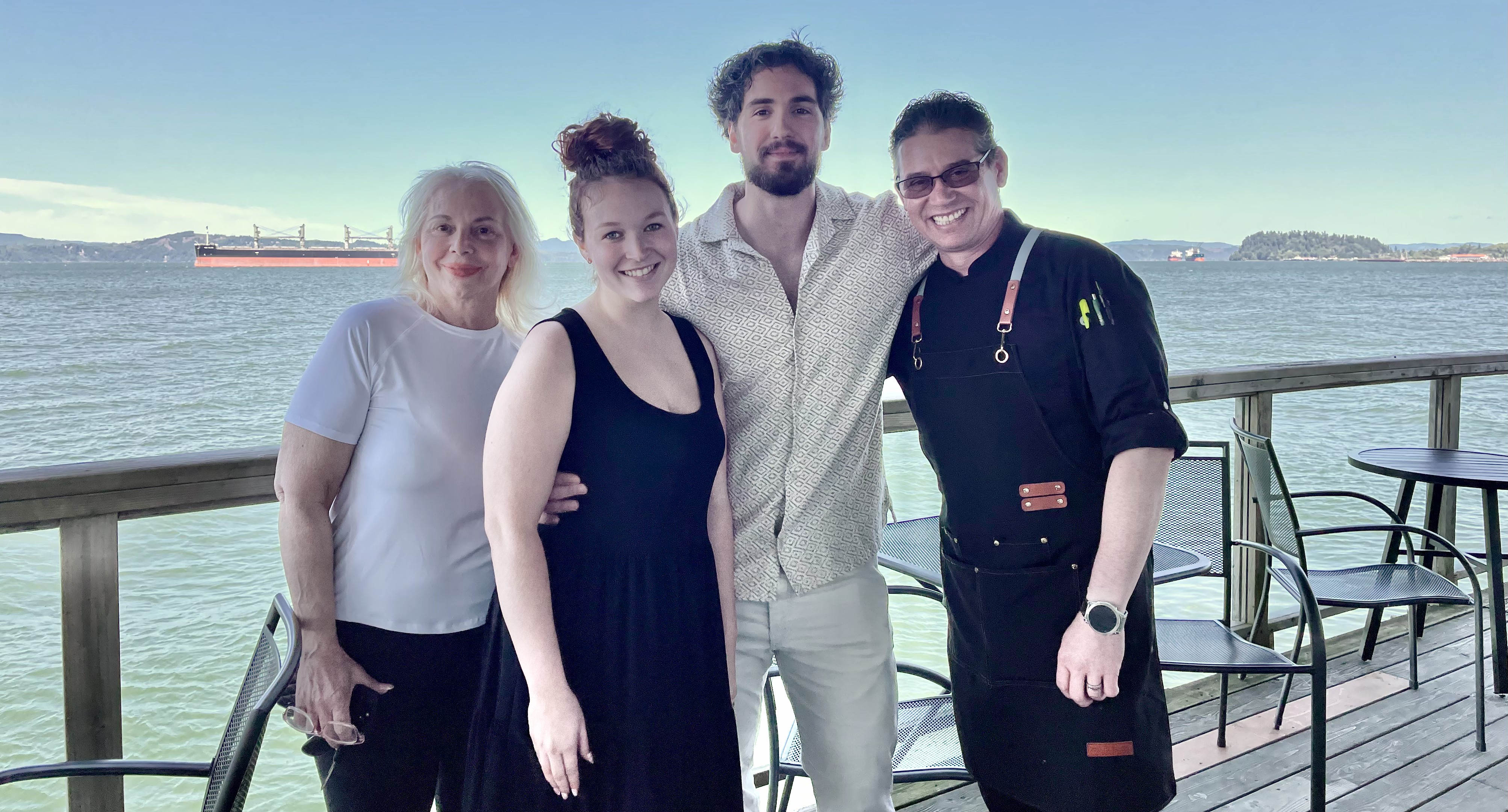Gillnetting: Is it antiquated or traditional?
Published 5:00 pm Monday, June 25, 2012
At midafternoon on a recent Wednesday, gillnetter Mark Ihander, 60, launches his nameless 22-foot boat from a private wooden pier at Astorias Tide Point Restaurant on the Nehalem Highway. The boat putters loudly away on the power of its 350-horsepower outboard into the bay, fed by the Youngs River. Hes just upstream from the tall, narrow old Warrenton-Astoria Highway bridge; the Astor Column looms to the north. Two bald eagles glide low overhead.
Trending
The baywaters are shallow and muddy, a so-called select area set aside for fishermen by the state and stocked each year with tens of thousands of hatchery salmon subsidized by hydroelectric ratepayers.
Ihander started work at 5 a.m., making four drifts across the bay. He caught one fish all morning.
The afternoon looks to be better.
Trending
Critics are correct that gillnetting is antiquated. Its practitioners prefer to call it traditional.
If the gillnetters seem preoccupied with heritage who is of Norwegian stock, who is Finnish or Italian or Irish, and who is fresh off the boat thats because they have spent years dragging the same kind of nets around the same waters as their ancestors.
Ihander may have been born in Astoria, but he is Finnish first.
My grandfather, he says, went 55 years without power, on the sea.
White fishermen took up gillnetting in the mid-1800s, according to old newspaper accounts and several histories of Oregon fishing. Pacific Northwest native tribes also historically used several types of fishing nets, including some like gillnets.
Today, gillnets are more or less the only permitted commercial fishing apparatus on the Columbia River. Many other types of gear were eventually outlawed: fish traps, fish wheels and seine nets, which work like a funnel.
Gillnets are so called because theyre designed to snag fish by the gills. Most other states ban gillnets. Oregon strictly regulates their design and deployment.
The boats themselves can be spotted by the large spools, called drums, on their decks. Wound tight and thick around the center of the spool is a pale bluish-white wad of net.
The weave of the mesh, hypnotically complex, stretches between a dark, heavy lead line, which sinks to the bottom, and a bright blue cork line, which, with the help of those small white floats the shape of a Nerf football, stays near the waters surface. The gauge of this mesh is 7 inches, sized for spring chinook.
Ihanders boat has one steering wheel inside the cabin and another full of controls outside the cabin, on the starboard side near the spool. This allows Ihander to work the net and pilot the boat at the same time, without help from a crew.
Wedged between the net and the bulwark, he sets the boat into reverse, and the spool begins to unwind.
With his left hand on the wheel, he guides the boat backward across the bay. With his right, he tugs now and again at the cork line to keep it on track and to straighten any tangles in the mesh before it vanishes under the water. He will lay 750 feet of net into Youngs Bayless than half of the legal length.
The spool turns quickly, and every second, another white float slides onto the water.
The thing about being in such a small, tight boat like this, he shouts over the noise of the motor, youve got to be careful when youre laying the net out. More than once a guy has gotten his feet jerked out from under him.
Ihander doesnt wear a life jacket, at least not here in Youngs Bay.
And he usually works alone, even in Alaska. Surprisingly agile, he moves carefully but confidently around the net drum.
Caution is warranted. This work can kill. Many years ago, five of Ihanders good friends then young men seeking their fortune in the Alaska waters drowned, their bodies never recovered, on a fishing expedition he was invited on. Last year, his father slipped and hit his head while fishing; he died before Ihanders brother could get him to the hospital.
Ihander holds up his left hand and clenches it. The ring finger doesnt bend like the others. An accident on the bulwark once severed the finger. His crewmates put it on ice like a caught fish, and the finger was later reattached.
Hes been through worse on land.
Eight years ago, Ihander was diagnosed with lung cancer. He credits his recovery to many gallons of green tea and two rounds of chemotherapy at Oregon Health & Science University arranged by his wife. While most chemo patients lose a lot of weight, Ihlander says he gained 40 pounds during treatment, improving his odds of survival. He says whenever he began to vomit, he just swallowed it. And so fishing all the decades spent around fish guts and grievous wounds helped save his life, by making him less squeamish. I mean, weve had to stitch ourselves up, for chrissakes, he says. Theres nobody to help you.
Ihander stops. Theres a fish! he says. I heard a snap. That meant he broke a mesh.
He sounds as excited as if hed never seen one before.
Sports fishermen catch 82 percent
Last spring, state figures show, the gillnetters took a combined 11,000 chinook salmon from set-aside, hatchery-stocked areas like Youngs Bay. In all inland waters and seasons last year, they caught 95,015 chinook.
Thats a fairly small share of the overall salmon catch. Tribes are entitled to half of the overall allowable harvest. Sport fisherman take most of the rest. According to Oregon Department of Fish and Wildlife figures, since 2000 in the Columbia River and its tributaries, sport fishermen took 82 percent of the reported salmon, not counting the tribal share.
Gillnetters take a share of whats left, but the proposed ballot measure would make the practice of gillnet fishing illegal, and outlaw the sale of fish caught by gillnets in Oregon. (Tribal fisherman could still use them and sell the fish, though most of their catch is consumed ceremonially.)
Supporters of the ballot measure say there are several reasons to outlaw gillnets including the fact many states have already done so. (gillnets are legal across the Columbia in Washington, but were banned in California coastal waters by a 1990 proposition that provided compensation to displaced fishermen.)
Advocates say gillnets cause a high mortality rate for fish that manage to escape from the mesh, and produce a high amount of bycatch nontargeted species compared to other, more selective forms of fishing.
Its about moving the industry forward, not eliminating it, says Jeremy Wright of Wright Communications and Public Affairs, which has advised the anti-gillnetting campaign.
They also say the nets cause the salmon to suffer. They produce pictures of fish with the scales and skin around their heads peeled off, raw and pink flesh showing through their heads. Other photos show salmon with torn gills, and seals with deep, bleeding wounds around their necks from the nets.
And they say other sea life birds and seals, for example, get caught in the nets.
Anti-gillnetting campaigners say the proof for all this is in the photos which is problematic. The campaign shared several images that show abandoned nets, injured salmon and seals, and it claimed all were taken within the past couple of years on the Columbia River. But when pressed for details, the campaign changed that story one-third of the photos are years old, and one was outside Oregon. And the campaign hasnt been able to say when and where the photos of seals were taken.
However, studies specifically comparing gillnets and seine nets on Columbia River salmon are limited and incomplete. The distinction is important, because the results can be dramatically affected by mesh-net size and type, water temperature, depth and speed, other unique geographic factors and the species involved.
The measure would allow fishermen to use a different kind of net, called a purse seine that hangs like a basket underwater, then tightens around the fish before hauling them by crane into a boat. Ironically, Oregon voters approved a ban on purse seine nets in 1948, a measure supported by gillnetters.
They were probably pitching the same arguments back then, that the seine was too effective, says John North, a Columbia River fisheries manager with ODFW. It probably came down to money like everything else. Its not that different from whats going on now.
This story first appeared in Willamette Week. It is reprinted with permission.









